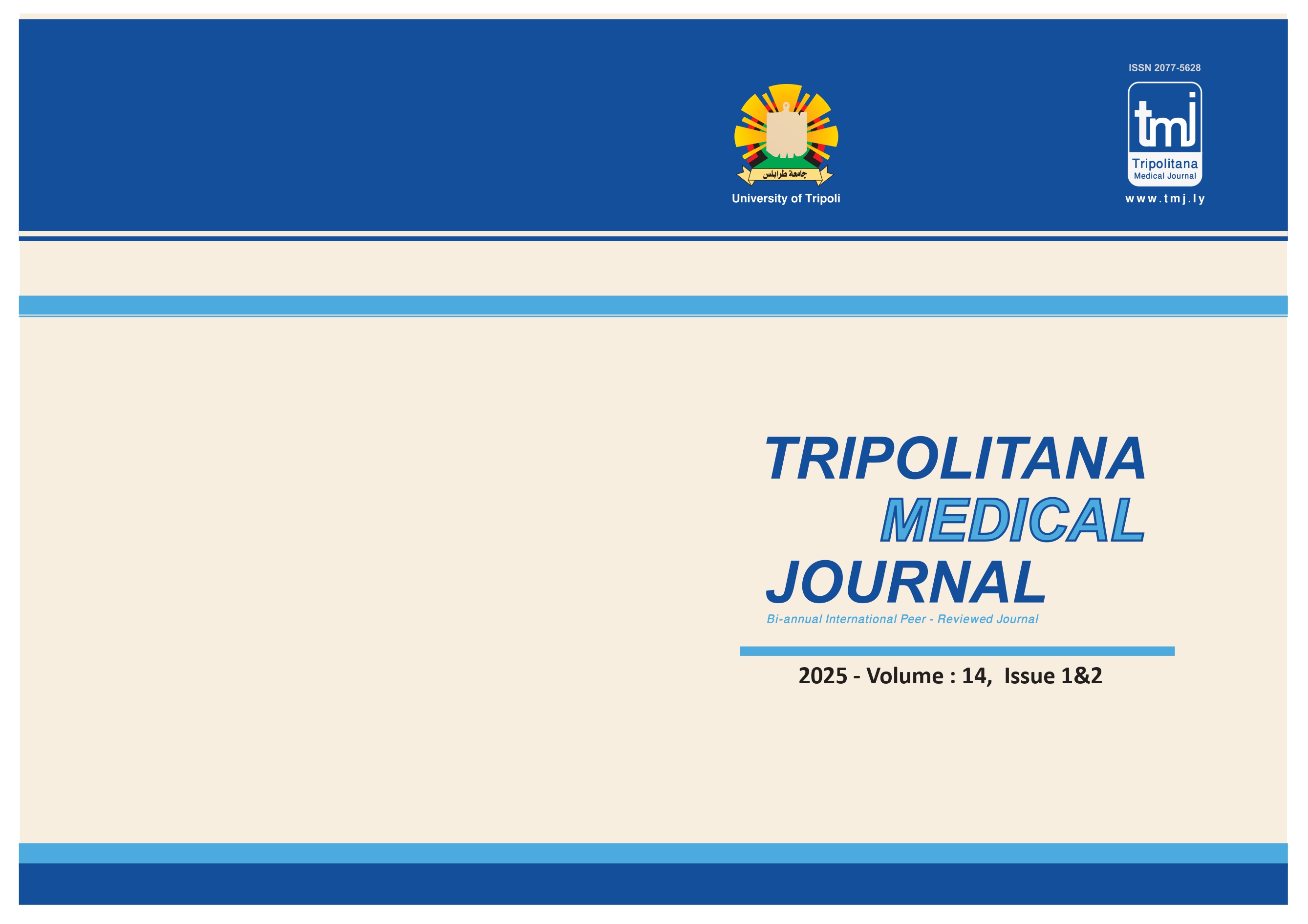Hyperuricemia in Libyan Patients with Cardiovascular Diseases
الكلمات المفتاحية:
Hyperuricemia; Cardiovascular diseases; Uric acidالملخص
Hyperuricemia is a metabolic disorder characterized by elevation of uric acid (UA) in the blood. It is associated with a range
of commodities including gout, cardiovascular diseases (CVDs), kidney disorders, metabolic syndrome, and diabetes, among
others.
The goal of the study is to look into possible risk factors for hyperuricemia, specifically the possible impacts of age, gender, body
mass index (BMI), diabetes, and the use of various antihypertensive drugs on the incidence of hyperuricemia in Libyan patients
who also have cardiovascular disease.
In all, 59 patients with various CVDs were involved in the study. Each participant’s sociodemographic and health-related
lifestyle factors were recorded (age, BMI, diabetes, smoking, alcohol consumption). Serum urea, uric acid, triglycerides, serum
creatinine, low density lipoprotein were all measured. Patient’s complaint of hyperuricemia (urinary stones, arthalgia, arthritis,
or asymptomatic) was also recorded.
Thirty-three women (54.9%) and twenty-six men (41.1%) with hyperuricemia and cardiovascular disease, ages 28–86,
were recruited for the research. In 59.3% of cases, hypertension was the most prevalent cardiovascular illness, followed by
hypertension/heart failure with 13.6%.
Hypertension was the most common cardiovascular disease (59.3%), followed by hypertension/heart failure (13.6%). The
majority of patients with hyperuricemia (93.2%) had no complaints (asymptomatic), and kidney stones were recorded in
only 6.8%. Unknown cause of hyperuricemia was reported in 49.2%, drug-induced in 45.8%, and renal causes in only 8.5%.
The most frequently used drugs in these patients were thiazide diuretics, loop diuretics, and calcium channel blockers (23.7%,
22%, and 18.6%, respectively).This study adds to the growing body of research on the relationship between cardiovascular
disease and hyperuricemia. Our results regarding the asymptomatic nature of hyperuricemia, the prevalence of diabetes and
hypertension, and gender differences are consistent with previous studies. Our findings highlight the importance of regularly
testing uric acid levels in patients with cardiovascular disease to avoid complications, even in the absence of symptoms.




